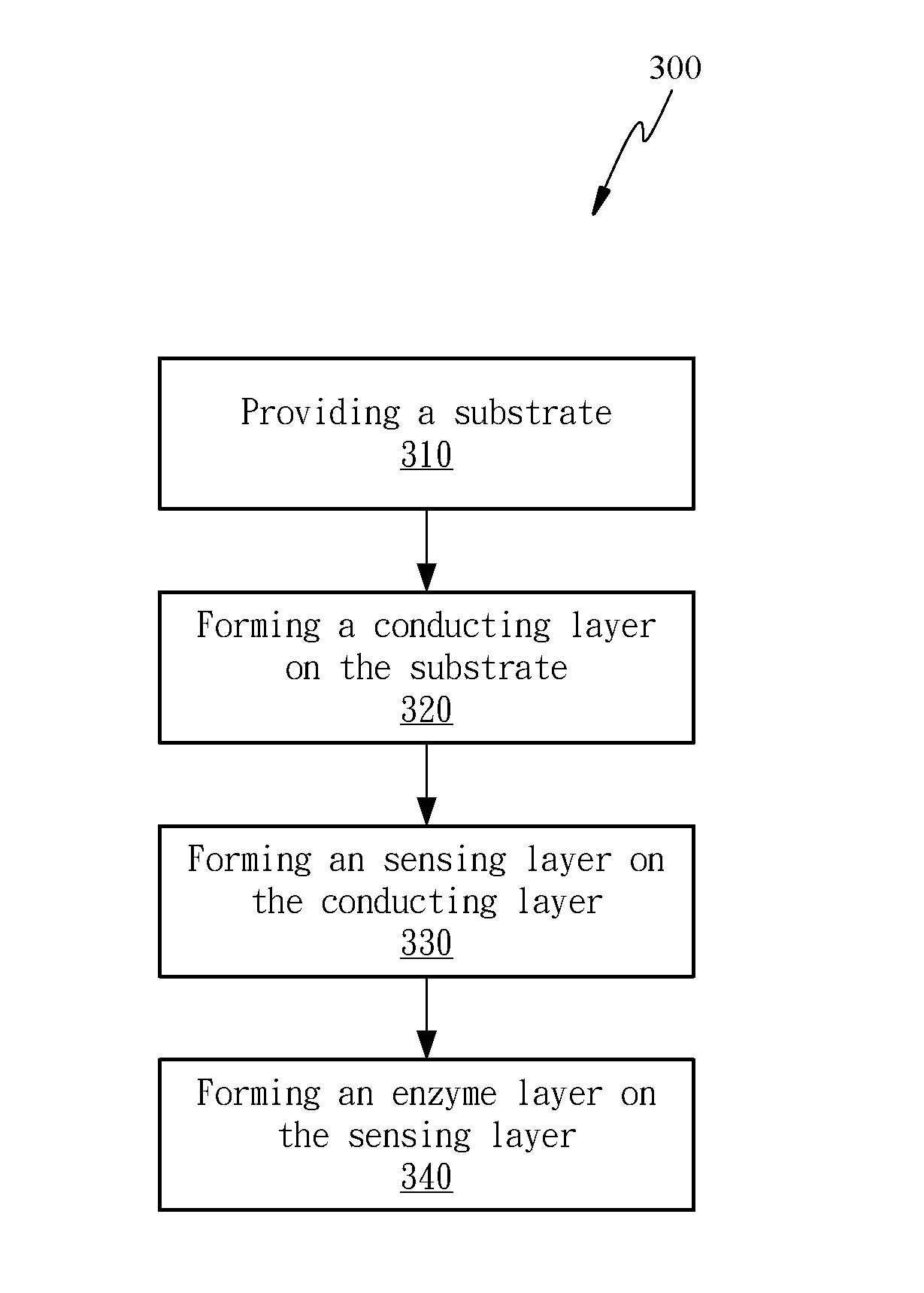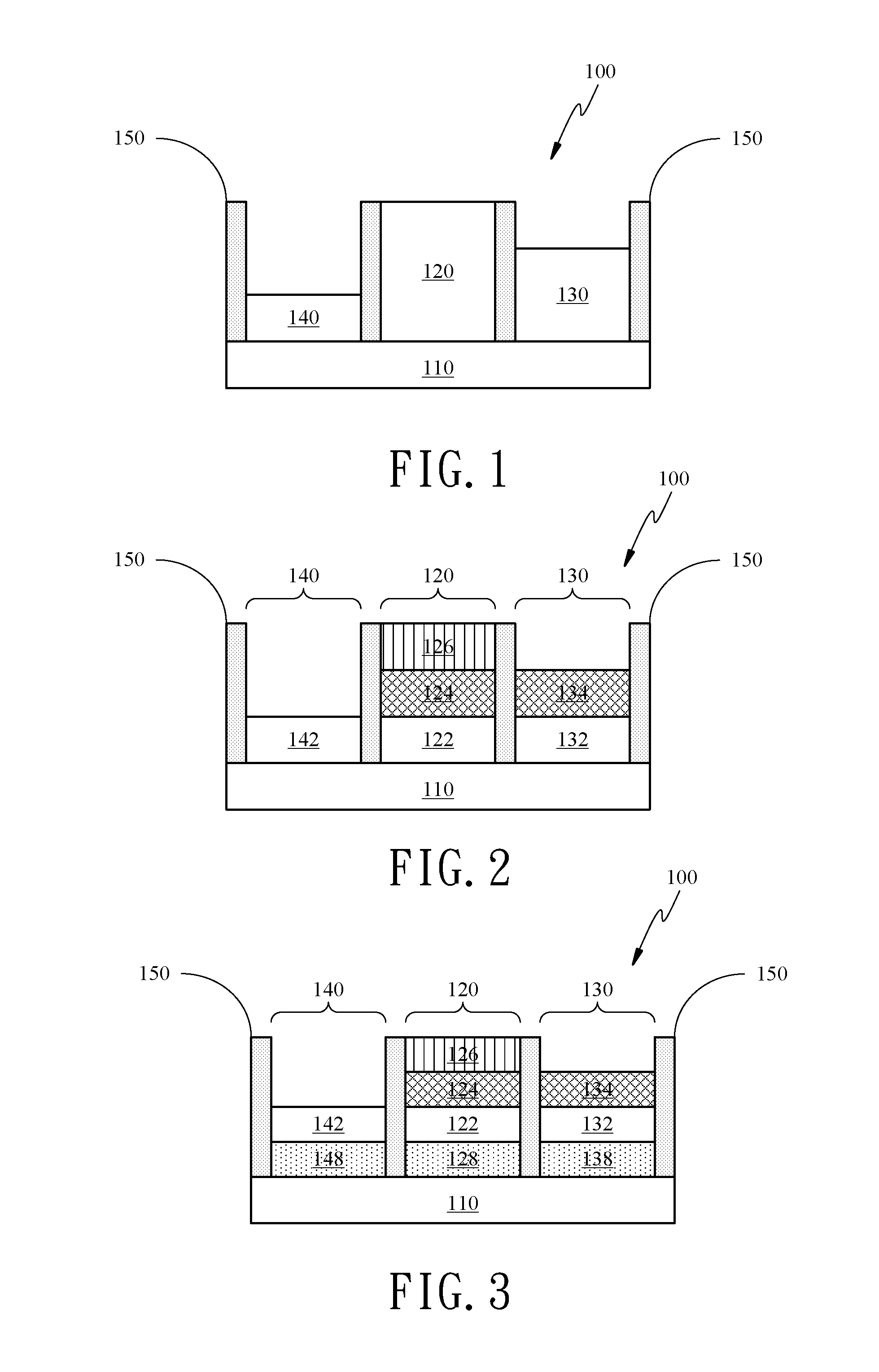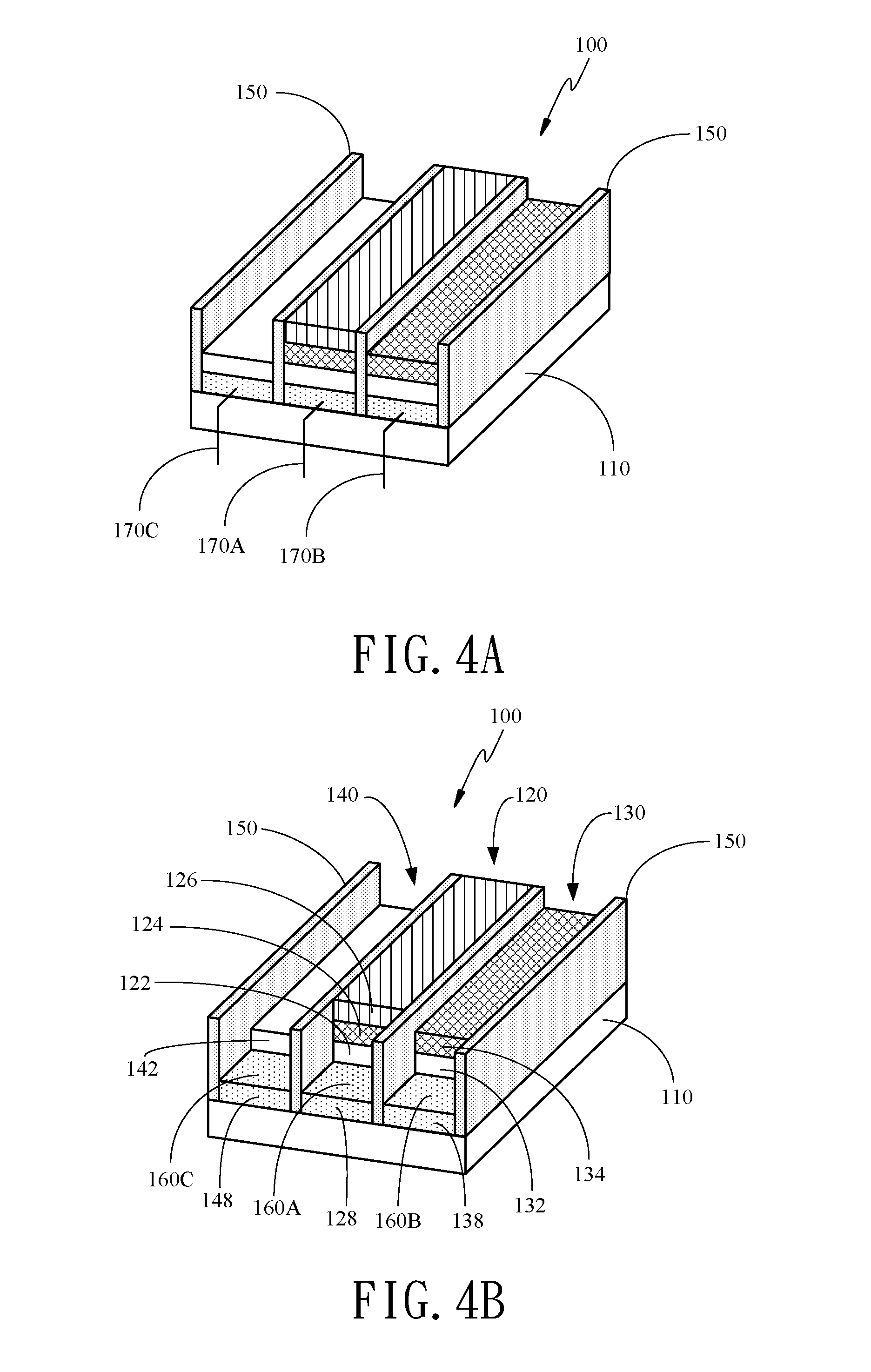Potentiometric biosensor for detection of creatinine and forming method thereof
a biosensor and creatinine technology, applied in the field of biosensors, can solve the problems of high production cost, complicated design of amperometric biosensors, and high cost of manufactur
- Summary
- Abstract
- Description
- Claims
- Application Information
AI Technical Summary
Benefits of technology
Problems solved by technology
Method used
Image
Examples
first embodiment
[0019]As shown in FIG. 1, the present invention discloses a potentiometric biosensor 100 for detection of creatinine, comprising a substrate 110, a working electrode 120 formed on the substrate 110, a first reference electrode 130 formed on the substrate 110, a second reference electrode 140 formed on the substrate 110, and a packaging structure 150, which separates the above-mentioned three electrodes. The material of above-mentioned substrate 110 comprises one selected from the group consisting of the following: insulating materials (such as insulating glass), non-insulated materials (such as indium-tin oxide glass and non-insulated tin oxide glass) and flexible materials (such as polyethylene terephthalate (PET)). The above-mentioned packaging structure 150 is epoxy resin. The best measurement range of the biosensor 100 is between pH6 to pH8.
[0020]As shown in FIG. 2, in this embodiment of the present invention, the above-mentioned working electrode 120, comprising a first sensing...
second embodiment
[0027]As shown in FIG. 5, the present invention discloses a working electrode 200 for detection of creatinine, comprising a substrate 210, a sensing layer 220 formed on the substrate 210, an ion-selective layer 230 formed on the sensing layer 220, and an enzyme layer 240 formed on the ion-selective layer 230. The sensing layer 220 is a non-insulated solid ion which comprises one selected from the group consisting of the following: tin dioxide, titanium dioxide, and titanium nitride. The ion-selective layer 230 is an ammonium ion-selective layer which comprises carboxylated polyvinylchloride (PVC-COOH). The above-mentioned enzyme layer 240 comprises creatinine iminohydrolase (CIH). The enzyme layer 240 is immobilized on the ion-selective layer 230 via entrapment method by photocrosslinkable polyvinyl alcohol containing stilbazolium group (PVA-SbQ). The working electrode 200 further comprises a packaging structure 260 which is epoxy resin.
[0028]An example of the second embodiment is s...
third embodiment
[0030]As shown in FIG. 6, the present invention discloses a potentiometric biosensor 100 for detection of creatinine, comprising a substrate 110, a working electrode 120 formed on the substrate 110, a first reference electrode 130 formed on the substrate 110, a second reference electrode 140 formed on the substrate 110, a packaging structure 150, which separates the above-mentioned three electrodes, and a judgment module 180 to electrically couple with a potentiometric biosensor 100. The judgment module 180 receives signals from the first reference electrode 130, the second reference electrode 140, and the working electrode 120 via wire 170B, wire 170C, and wire 170A, and to calculate the concentration of creatinine.
[0031]As shown in FIG. 7, the present invention discloses a method for forming a working electrode of a potentiometric biosensor for detecting creatinine. The flow chart 300 comprises four major steps. The first step 310 is providing a substrate, and the second step 320 ...
PUM
| Property | Measurement | Unit |
|---|---|---|
| Transmission | aaaaa | aaaaa |
| Efficiency | aaaaa | aaaaa |
| Selectivity | aaaaa | aaaaa |
Abstract
Description
Claims
Application Information
 Login to View More
Login to View More - R&D
- Intellectual Property
- Life Sciences
- Materials
- Tech Scout
- Unparalleled Data Quality
- Higher Quality Content
- 60% Fewer Hallucinations
Browse by: Latest US Patents, China's latest patents, Technical Efficacy Thesaurus, Application Domain, Technology Topic, Popular Technical Reports.
© 2025 PatSnap. All rights reserved.Legal|Privacy policy|Modern Slavery Act Transparency Statement|Sitemap|About US| Contact US: help@patsnap.com



